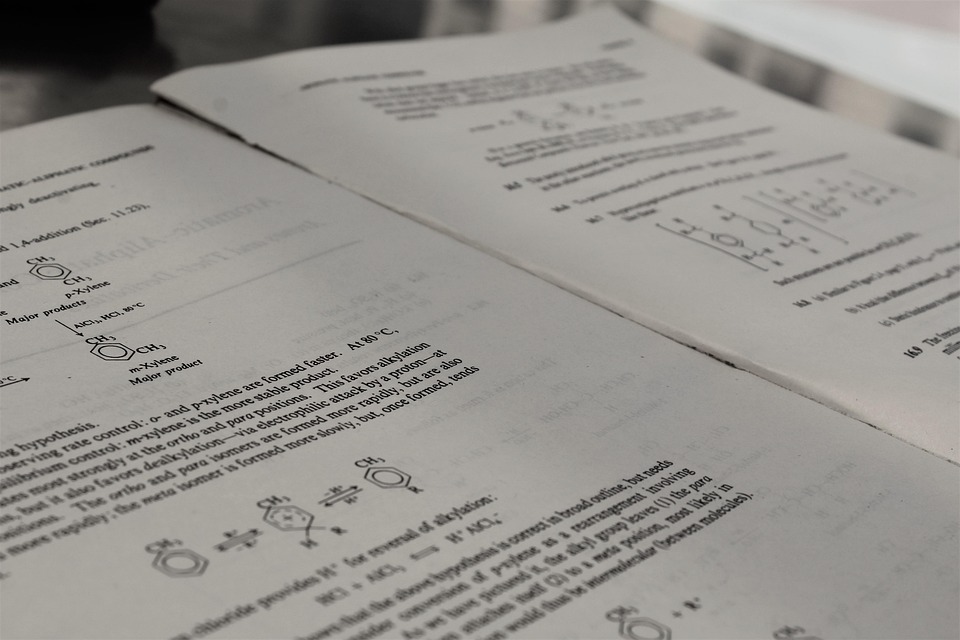Beyond the Lab: Real-World Applications of Chemical Knowledge
Introduction
Chemical knowledge is foundational in shaping our understanding of the world around us. While much of this knowledge is developed in laboratory settings, its practical applications extend far beyond the confines of traditional science labs. This article explores various real-world applications of chemical knowledge across multiple sectors, including medicine, environmental science, industry, and consumer products. We will examine how chemistry influences these areas and contributes to societal advancement.
1. Medicine and Pharmaceuticals
1.1 Drug Development
One of the most significant applications of chemistry is in the field of medicine, particularly in drug development. Chemists play a crucial role in synthesizing new compounds, understanding their interactions within the body, and refining them for therapeutic use. The process begins with drug discovery, where bioactive compounds are identified and selected for further development.
Pharmaceutical chemists employ various techniques such as high-throughput screening, structure-activity relationship (SAR) studies, and medicinal chemistry to create effective medications. The synthesis of antibiotics, for example, relies heavily on chemical knowledge. The discovery of penicillin by Alexander Fleming in 1928 revolutionized medicine, showcasing how chemistry can lead to breakthroughs that save millions of lives[^1].
1.2 Vaccination and Immunology
Chemical knowledge is also vital in vaccine development. Vaccines work by introducing antigens into the body, prompting an immune response. The chemistry behind adjuvants, which enhance the body’s immune response to the vaccine, is a critical area of research. The COVID-19 pandemic highlighted the speed and effectiveness of vaccine development, particularly mRNA vaccines developed by companies like Pfizer-BioNTech and Moderna[^2]. These vaccines utilized cutting-edge chemical techniques and biochemistry to create effective immunizations in record time.
2. Environmental Science
2.1 Pollution Control
Chemical knowledge has significant implications for environmental science, especially in pollution control. Chemists develop methods to detect and mitigate pollutants in the air, water, and soil. For example, catalysis involves using catalysts to accelerate chemical reactions, which can help convert harmful pollutants into less toxic substances. This technology is crucial in automotive and industrial processes to reduce emissions[^3].
Moreover, chemists study the behavior of chemicals in ecosystems. Understanding how pollutants interact with biological systems helps in developing strategic approaches to remediation, such as bioremediation, where organisms are used to clean up contaminated sites[^4].
2.2 Sustainable Chemistry
Sustainable chemistry, or “green chemistry,” focuses on minimizing waste and reducing harmful side effects while conducting chemical processes. This involves designing products and processes that reduce the consumption of hazardous substances. For example, the development of biodegradable plastics and alternative solvents is a direct application of chemical knowledge aimed at reducing environmental impact[^5].
3. Industry and Manufacturing
3.1 Material Science
In the industrial sector, chemical knowledge plays a vital role in the development of new materials. Advanced polymers, composites, and nanomaterials are engineered for various applications, from aerospace to consumer electronics. The ability to manipulate chemical structures at the molecular level allows for the creation of materials with specific properties, such as increased strength, flexibility, or thermal stability[^6].
For example, Kevlar, a high-strength fiber used in bulletproof vests, was developed through careful manipulation of aromatic and aliphatic structures in polyamides[^7]. The continuous research in material science reflects the direct application of chemistry to create innovative products that enhance safety and performance.
3.2 Chemical Manufacturing
Chemical manufacturing is a cornerstone of many industries, from food processing to cosmetics. The formulation of products often requires deep chemical understanding, including the interactions between ingredients and their effects on consumers.
For instance, the production of fertilizers is heavily reliant on chemical reactions, such as the Haber-Bosch process to synthesize ammonia from nitrogen and hydrogen. This process feeds billions of people each year, illustrating the critical role of chemical knowledge in food production[^8]. Similarly, the formulation of household cleaning products hinges on understanding chemical interactions and the efficacy of active ingredients[^9].
4. Consumer Products
4.1 Food Chemistry
Chemical knowledge plays a critical role in the food industry, particularly in food safety, preservation, and flavor enhancement. Understanding the chemical processes involved in fermentation has led to the production of alcoholic beverages, bread, and yogurt[^10]. The Maillard reaction, a chemical reaction between amino acids and reducing sugars, is essential for developing desired flavors and colors in cooked foods[^11].
Moreover, food scientists employ chemical knowledge to develop preservatives that increase shelf life while ensuring safety. The challenge lies in balancing these additives’ effectiveness while maintaining the quality of the food product[^12].
4.2 Cosmetics and Personal Care
The cosmetics industry also relies heavily on chemistry. Formulating lotions, shampoos, and makeup products requires a deep understanding of emulsion chemistry, surfactants, and skin biology. For example, the chemical composition of sunscreens involves understanding how UV filters absorb or reflect harmful rays to protect the skin[^13].
Additionally, the cosmetic industry continually seeks natural and organic compounds that provide similar or superior benefits compared to traditional synthetic chemicals. This shift reflects broader consumer trends toward safer and more environmentally friendly products[^14].
5. Energy Solutions
5.1 Renewable Energy
In the quest for sustainable energy solutions, chemistry is at the forefront. Research in renewable energy, such as solar cells and batteries, relies on chemical principles to create more efficient energy systems. For instance, advancements in photoelectric materials enhance solar panel efficiency by optimizing light absorption[^15].
Batteries, particularly lithium-ion technology, demonstrate the importance of chemistry in energy storage. Improvements in battery chemistry enhance energy density and charge cycles, crucial for electric vehicles and renewable energy systems[^16].
5.2 Fuel Cells
Fuel cells represent another innovative application of chemistry in energy solutions. These devices convert chemical energy directly into electrical energy through electrochemical reactions, often utilizing hydrogen as a fuel source. The development of fuels cells for various applications, from vehicles to remote power generation, underscores how chemical knowledge translates to practical energy solutions[^17].
Conclusion
The applications of chemical knowledge stretch far beyond laboratory walls, permeating various aspects of daily life. From medicine and environmental science to industry and consumer products, chemistry plays a pivotal role in addressing modern challenges. As we advance, leveraging chemical knowledge will be increasingly critical in developing sustainable solutions to meet the growing demands of society.
References
[^1]: Fleming, A. (1929). “Penicillin; a discovery of the antibiotic properties of Penicillium.” British Journal of Experimental Pathology.[^2]: Moderna. (2020). “mRNA Technology.” mRNA-1273 Vaccine.
[^3]: Green, T. (2015). “Catalysis and Pollution Control.” Environmental Chemistry Review.
[^4]: Ghosh, U., & Kalyani, S. (2017). “Bioremediation Methods for Polluted Water and Soils.” Journal of Environmental Engineering & Technology.
[^5]: Anastas, P. T., & Warner, J. C. (1998). Green Chemistry: Theory and Practice. Oxford University Press.
[^6]: Manners, I. (2003). “Polymer Chemistry: A Practical Approach.” Macromolecular Chemistry and Physics.
[^7]: DuPont. (2009). “Kevlar: The Ultimate, Lightweight Body Armor.” DuPont Technical Publications.
[^8]: Haber, F. (1909). “The Ammonia Synthesis Process.” Chemistry in Everyday Life.
[^9]: Maier, A., & Klug, C. (2014). “Chemical Formulations in Consumer Products.” Journal of Consumer Products.
[^10]: Fennema, O. R. (1996). Food Chemistry. CRC Press.
[^11]: Yada, R. Y. (2004). “The Maillard Reaction in Food Science.” Food Research International.
[^12]: McGee, H. (2004). On Food and Cooking: The Science and Lore of the Kitchen. Scribner.
[^13]: Lademann, J., et al. (2007). “Chemical Composition of Sunscreens.” Journal of Cosmetic Dermatology.
[^14]: Carson, R. (1962). Silent Spring. Houghton Mifflin.
[^15]: Green, M. A., et al. (2010). “Solar Cell Efficiency Tables.” Progress in Photovoltaics: Research and Applications.
[^16]: Nagaura, T., & Tozuka, Y. (1990). “Lithium-ion rechargeable batteries.” Science and Technology of Advanced Materials.
[^17]: Turner, J. A. (2004). “A Realizable Renewable Energy Future.” Science.


























Add Comment